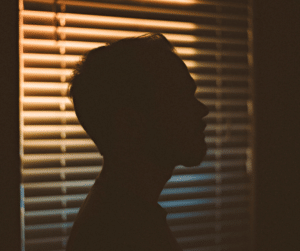A 52-year-old male presented to his primary care physician complaining of 2 days of right-sided hearing loss and a “roaring” right-sided tinnitus. There were no obvious inciting factors and the patient reports he first noticed hearing loss upon awakening 2 days prior. The patient denied any associated otalgia, otorrhea, or vertigo but did report some right-sided aural pressure. He felt that his hearing loss may have been due to cerumen impaction as he had been prone to that before.
Examination
Otoscopy revealed the right external auditory canal to be partially occluded by cerumen. This was removed. Upon removal, the tympanic membrane was visualized and was intact without any signs of middle ear effusion or retraction. However, the patient still felt that his hearing was muffled, and he continued to hear the tinnitus.
A tuning fork exam was performed. This revealed a Weber test that was heard louder in the left ear. The Rinne test revealed air conduction to be louder than bone conduction bilaterally. The patient was referred to audiology and an audiogram was performed on the same day. This showed moderate to severe high frequency sensorineural hearing loss in the right ear and normal hearing in the left ear. Tympanograms were normal bilaterally and word recognition scores were 26% on the right-side and 92% on the left-side.
Treatment
The patient was prescribed a high dose oral prednisone taper starting at 60 mg for seven days and then tapering down over the next 1 week. His hearing did recover completely as confirmed on an audiogram obtained at the completion of therapy.
Discussion
What is the work-up and what are the treatment options for sudden sensorineural hearing loss (SNHL)?
When sudden SNHL is suspected, obtaining a formal audiogram as soon as possible is the first step. Ideally, this should be done within 1 week, if possible. CT imaging and routine laboratory testing are not generally recommended as these have been found to be very low yield in the work-up of sudden SNHL and may delay eventual treatment.
However, all patients that are confirmed to have sudden SNHL should eventually be evaluated for retrocochlear pathology. This is done because the prevalence of vestibular schwannomas in patients with sudden SNHL has been shown to range from 3-10% in several studies. This is typically done with an MRI of the internal auditory canals.
Once the diagnosis of sudden SNHL has been established with an audiogram, prompt initiation of oral corticosteroids is essential to allow for the best chance of hearing recovery. Most trials that demonstrated superior efficacy of steroids over placebo initiated the steroids in a 1-2 week window from symptom onset, so the earlier the steroids are started the better.
In terms of dosing, the general recommendation is oral prednisone 1 mg/kg/d in a single (not divided) dose with the usual maximum dose of 60 mg daily and a treatment duration of 10-14 days. I typically give prednisone 60 mg daily for 7 days and then taper from there over the next week. Of note, Medrol Dosepak does not provide an adequate dose of steroids. In addition, other medications such as antivirals, thrombolytics, and vasodilators have shown no benefit in sudden SNHL and should not routinely be prescribed.
Intratympanic (IT) steroids are another option that we often provide as either salvage therapy for those patients who fail initial management or as primary therapy for those patients where systemic corticosteroids are contraindicated.
When used as salvage, there are several formulations of IT steroids and dosing schedules that are used but in general we use either 10 mg/ml or 24 mg/ml of dexamethasone injected via a puncture in the tympanic membrane and into the middle ear. I have the patient lay supine for 20 minutes without swallowing or talking so that the medication stays in the middle ear and soaks into the inner ear. The intratympanic steroid injections are typically done 3-4 times over the course of 2-4 weeks obtaining an audiogram before each injection.
Many patients ask about hyperbaric oxygen therapy (HBOT) with sudden SNHL. HBOT is not currently FDA approved for this indication; however, there have been multiple randomized controlled trials and a Cochrane review that indicate some potential benefit.
HBOT therapy typically involves 10-20, 1-2 hour sessions over days to weeks. During these sessions (also called dives) the patient is exposed to 100% oxygen at a pressure level greater than 1 atmosphere in a specially designed chamber. HBOT is thought to increase oxygen flow to the cochlea and reduce hypoxia and edema. HBOT for sudden SNHL is not usually covered by insurance.
And finally, for those patients with severe to profound unilateral SNHL that does not improve with the above treatments, can have the option for a cochlear implant. Cochlear implantation for single sided profound SNHL is especially helpful if the patient has significant tinnitus.
—————————
At Pacific Head and Neck, we employ thorough evaluation and treatment regimes. To set up a consultation with our top Los Angeles ENT doctors, feel free to call us at (310) 477-5558.








